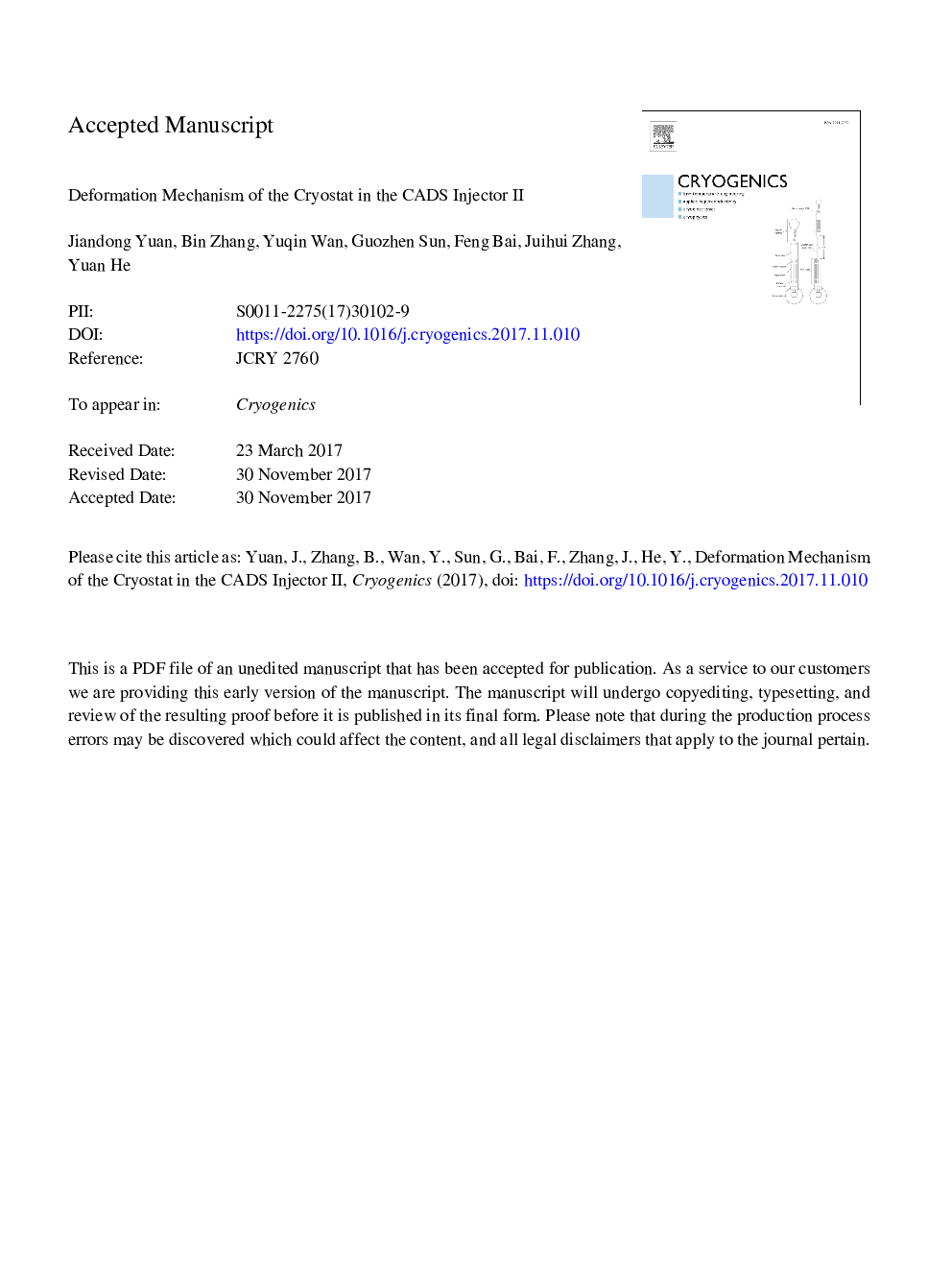| Article ID | Journal | Published Year | Pages | File Type |
|---|---|---|---|---|
| 7915745 | Cryogenics | 2018 | 12 Pages |
Abstract
Thermal contraction and expansion of the Cryostat will affect its reliability and stability. To optimize and upgrade the Cryostat, we analyzed the heat transfer in a cryo-vacuum environment from the theoretical point first. The simulation of cryo-vacuum deformation based on a finite element method was implemented respectively. The completed measurement based on a Laser Tracker and a Micro Alignment Telescope was conducted to verify its correctness. The monitored deformations were consistent with the simulated ones. After the predictable deformations in vertical direction have been compensated, the superconducting solenoids and Half Wave Resonator cavities approached the ideal “zero” position under liquid helium conditions. These guaranteed the success of 25â¯MeV@170â¯uA continuous wave protons of Chinese accelerator driven subcritical system Injector II. By correlating the vacuum and cryo-deformation, we have demonstrated that the complete deformation was the superposition effect of the atmospheric pressure, gravity and thermal stress during both the process of cooling down and warming up. The results will benefit to an optimization for future Cryostat's design.
Related Topics
Physical Sciences and Engineering
Materials Science
Electronic, Optical and Magnetic Materials
Authors
Jiandong Yuan, Bin Zhang, Yuqin Wan, Guozhen Sun, Feng Bai, Juihui Zhang, Yuan He,
